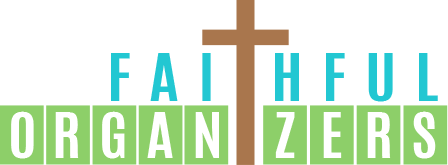Controlling Paper Clutter
“It’s Easier to Keep Up Than to Catch Up”
Paper is one of the most common areas that I hear from my clients that they would like to conquer. It is a basic problem that everyone struggles with! It seems that everywhere we turn, we are collecting paper – whether it’s junk mail, bills, receipts, paperwork from school, tax documents, to-do lists, post-its, business cards, etc. The piles of paper that accumulate and seem to multiply overnight are a constant source of stress – whether we realize it or not! But the good news is – it is something that we actually have the power to control and do something about!
Here are some suggestions to get AND KEEP your paperwork organized!
First of all, Start Now! Start with the paperwork that you receive TODAY, not with what has been accumulating for months (or even years!) We will get back to conquering those old piles. However, first we need to set up routines for today so that those piles don’t get worse. You will be amazed that once you set up a system and it’s running smoothly, most of those piles that you accumulated in the past can either be tossed or shredded. But again – that’s a project for another day. Let’s start fresh TODAY!
Most importantly, remember…
Perfection is not your goal – Improvement is!
Most of our papers come in the form of mail. Here are some tips you can easily put into place to improve your mail clutter.
Think of your incoming mail in 4 categories:
Garbage (or recyle)
Action Papers (i.e. bills)
Reading Materials (i.e. magazines, flyers)
Reference Papers (i.e. insurance documents)
Garbage –
The Critical First Step – Open your mail near your garbage can! Throw away or recycle all of the junk mail and ads immediately!
Action Papers –
Next, open each piece of mail that needs your attention. Toss the outside envelope (and the inside envelope if you pay bills electronically.)
Separate your bills and keep them all in one place. I only use file folders that I can file vertically. I have a file on my desk in a vertical desk top organizer labeled “To Pay”. Filing things horizontally (i.e. piles) leads to stacks of papers that end up growing with extraneous paperwork and things can easily get lost that way.
I also have a vertical file on my desk labeled “Future Action” for items that need my attention that aren’t bills, but are still time sensitive.
Reading Materials –
Place items that you want to read where you will actually read them – perhaps on your coffee table or your nightstand or even your car if you spend time waiting in your car for kids, etc. (but be careful not to start accumulating paperwork in your car!)
Reference Materials –
Next, file any documents that you need to keep for future reference (i.e. statements, insurance documents, etc.). Again, using a vertical filing system. Do this immediately if you can. Yes, it will take you a couple of extra minutes – but that is nothing compared to the time that it will take later to try to find that document if it is not filed in its appropriate spot. Just like all of our other possessions, every piece of paper needs a “home”. This includes our important papers. It’s the only way we will be able to find them when we need them. Another option is to have a vertical file folder on your desk labeled “To File” – but I strongly suggest just taking the extra couple of minutes and file them where they belong immediately rather than having to handle that same piece of paper again later. Plus, if you end up needing that paper before you file it in its “home”, you’ll need to needlessly go through all the papers in that To File folder to find it (a waste of your precious time!)
How to Create a Filing System:
There are many ways to create a filing system. The most important thing is to create something that you will be able to easily maintain. Some people like all of their files in alphabetical order. Others prefer broad categories and then sub files within each category. There is no one “right” way. Do what works for you! The important part is that it needs to make sense to you and you need to use it!
Use a file cabinet or smaller file holder depending on how many files you have.
Common categories if filing alphabetically are:
Insurance (separate folder for each type of insurance – auto, homeowners, life, medical)
Automobile Maintenance
Medical Bills – Current Year
Bank Statements
Credit Card Statements
Home Improvements
Tax Documents – Current Year
Common categories if filing by category are:
Finance (subcategories could be bank statements, credit card statements, etc.)
Medical (subcategories could be insurance, bills, health articles, etc.)
Personal (subcategories could be pets, travel, home improvement, etc.)
User Manuals (include warranties, receipts, etc.)
If you are a visual person, consider buying some colorful files or labels. It may sound silly, but this can help make the filing process more enjoyable and you will be more likely to maintain it.
An electronic filing system is also an option that we will discuss in a future blog post. However, as much as we hear about going paperless in the future, it is unlikely that that will ever likely happen 100%. You will always need a paper filing system at home (or at your office). There is no better time to get that started than Now!
And the most important thing to remember is –
Perfection is NOT your goal – Improvement is!



